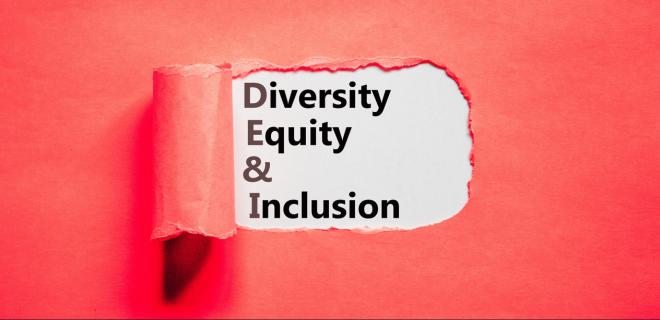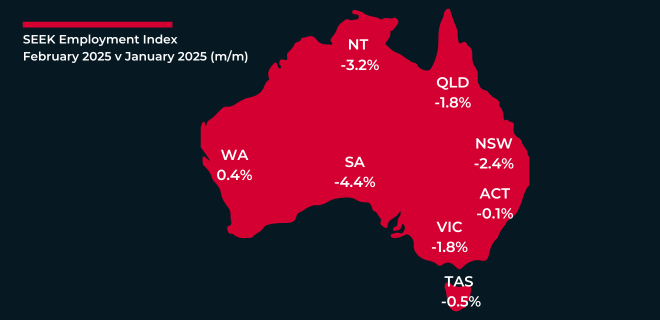Key Workforce Trends for 2025: Insights from Our LinkedIn Network

In 2025, the world of work continues to evolve at a rapid pace. To gain insight into the biggest workforce trends shaping the year ahead, we conducted polls across our LinkedIn network. The results are in, and the dominant themes include AI and technology, evolving working arrangements, career mobility, skills shortages, and the impact of a multigenerational workforce.
1. AI and Technology: Embracing the Shift
AI and automation are set to have the most significant impact in 2025, with 71% of our poll respondents identifying this as the biggest workplace trend. Dr. Ben Hamer, an accredited futurist, highlighted in the “2025 Future forecast” report that 48% of Australians feel optimistic about AI’s impact, but 68% feel overwhelmed by the speed of technological change—despite the fact that we are currently experiencing the slowest rate of tech evolution.
Indeed reported that the share of job postings mentioning GenAI or related terms has skyrocketed over the past year, up three times in Australia and even faster in other countries.
Key takeaway for employers:
As AI tools continue to reshape jobs, businesses that invest in upskilling, education and AI integration strategies will have a competitive advantage in attracting and retaining top talent.
2. Career Changes and Workforce Mobility
With economic shifts and evolving career priorities, in a recent LinkedIn poll we found that 58% indicated they are actively looking for a job change in 2025, while 29% are open to exploring new opportunities.
Key takeaway for employers:
This signals a high level of workforce mobility, meaning businesses will need strong retention strategies to hold onto key talent. Job seekers are placing greater emphasis on work-life balance, salary and compensation along with leadership quality, as noted by SEEK and Dr. Ben Hamer.
3. Evolving Working Arrangements
Flexible work arrangements remain a critical factor in employee satisfaction. 19% of respondents highlighted working arrangements as a key trend for 2025, with hybrid and remote work models continuing to be a major consideration.
However, many organisations are shifting towards structured hybrid models or requiring more in-office collaboration to drive engagement and productivity.
Key takeaway for employers:
The key challenge for 2025? Balancing flexibility with business needs while fostering a connected and engaged workforce.
4. Parental leave
Parental leave policies are becoming a major factor in job seekers’ decisions, with more employees expecting generous, flexible, and inclusive support from employers. Research from SEEK, Indeed, and Dr. Ben Hamer highlights that strong parental leave benefits contribute to higher employee satisfaction, retention, and workplace equality. Businesses that go beyond the statutory minimum by offering paid leave, flexible return-to-work options, and superannuation contributions are more likely to attract and retain top talent.
Key takeaways for employers:
Offering equal access to leave for all parents fosters workplace equality. Investing in family-friendly policies is no longer just a perk—it’s a necessity in a competitive job market where work-life balance is a top priority. Offering additional paid leave is a key factor in talent attraction, along with phased returns, remote work and adjusted hours to improve retention and job satisfaction.
5. Multigenerational Workforce: Bridging Communication Gaps
With five generations now coexisting in the workforce, businesses must navigate differences in communication styles, work expectations and technology adoption. Leaders will need to foster inclusive workplace cultures where knowledge-sharing, mentorship and adaptability thrive.
A report by Deloitte highlighted that about two out of five Gen-Z (born between 1997 and 2012) and Millennial (born between 1981 and 1996) employees “rejected a job or assignment because it did not align with their values.” These two generations demand flexibility and look for a company that prioritises diversity, equity and inclusion.
Key takeaways for employers:
Leadership teams should not generalise that all Gen-Zers are tech savvy and lack interpersonal skills likewise not all Baby Boomers (born between 1946 and 1964) are resistant to change or learning new technology. Tailoring communication strategies and leveraging the strengths of each generation will be key to building high-performing, collaborative teams.
6. Skills Shortages and the Need for Upskilling
A tight labour market and ongoing skills shortages will remain a challenge in 2025, particularly in industries such as tech, healthcare and trades. Employers will need to focus on internal upskilling, reskilling programs, and attracting non-traditional talent pools to bridge the gaps.
Many organisations are also moving away from traditional recruitment methods to a skills-based hiring model – seeking candidates with potential and a growth mindset. Skills-based hiring focuses primarily on skill requirements rather than formal education or experience. In a webinar by Indeed, “2024 Hiring Wrapped’, Callam Pickering, Senior Economist at Indeed acknowledged that employers want skills but rank experience as the most important when hiring.
Key takeaways for employers:
Businesses that invest in continuous learning and career development pathways will not only fill critical roles but also increase retention by showing commitment to employee growth. Employers that include skills-based hiring in their recruitment process will tap into a candidate pool
Employers should keep in mind what experience, skills and qualifications are actually needed as research has highlighted that males will apply even if they don’t have all the requirements, however females will generally not apply if they don’t meet all the requirements.
Final Thoughts
The 2025 workforce will be shaped by technological advancements, evolving job expectations, flexibility and the need for strong leadership. To attract and retain top talent, businesses must prioritise what truly matters to employees—whether that’s work-life balance, compensation, career growth or inclusive leadership.
By embracing these trends and proactively addressing workforce challenges, organisations can stay ahead in the race for top talent and build a future-ready workforce.
Sources: LinkedIn, SEEK, Indeed, Dr. Ben Hamer, Forbes

 Job Seekers
Job Seekers Resources
Resources Timesheets
Timesheets Submit a CV
Submit a CV Login
Login Temporary Staffing Solutions
Temporary Staffing Solutions Permanent Recruitment Solutions
Permanent Recruitment Solutions Executive Search
Executive Search Payroll Services
Payroll Services Employer Resources
Employer Resources HR Services
HR Services WHS Consulting
WHS Consulting Outplacement / Career Transition
Outplacement / Career Transition Accounting and Finance
Accounting and Finance Business Support
Business Support Community Services
Community Services Customer Service
Customer Service Engineering
Engineering Events and Exhibitions
Events and Exhibitions Government
Government Healthcare
Healthcare Labour Hire
Labour Hire Manufacturing
Manufacturing Not-for-profit
Not-for-profit Sales and Marketing
Sales and Marketing Warehousing and Logistics
Warehousing and Logistics About us
About us Meet the Team
Meet the Team Blog
Blog Community
Community Join the Team
Join the Team Candidate Timesheet
and Portal Information
Candidate Timesheet
and Portal Information Blog
Blog Join the Team
Join the Team Payroll Services
Payroll Services Timesheets
Timesheets Customer Service
Customer Service Engineering
Engineering Warehousing & Logistics
Warehousing & Logistics

